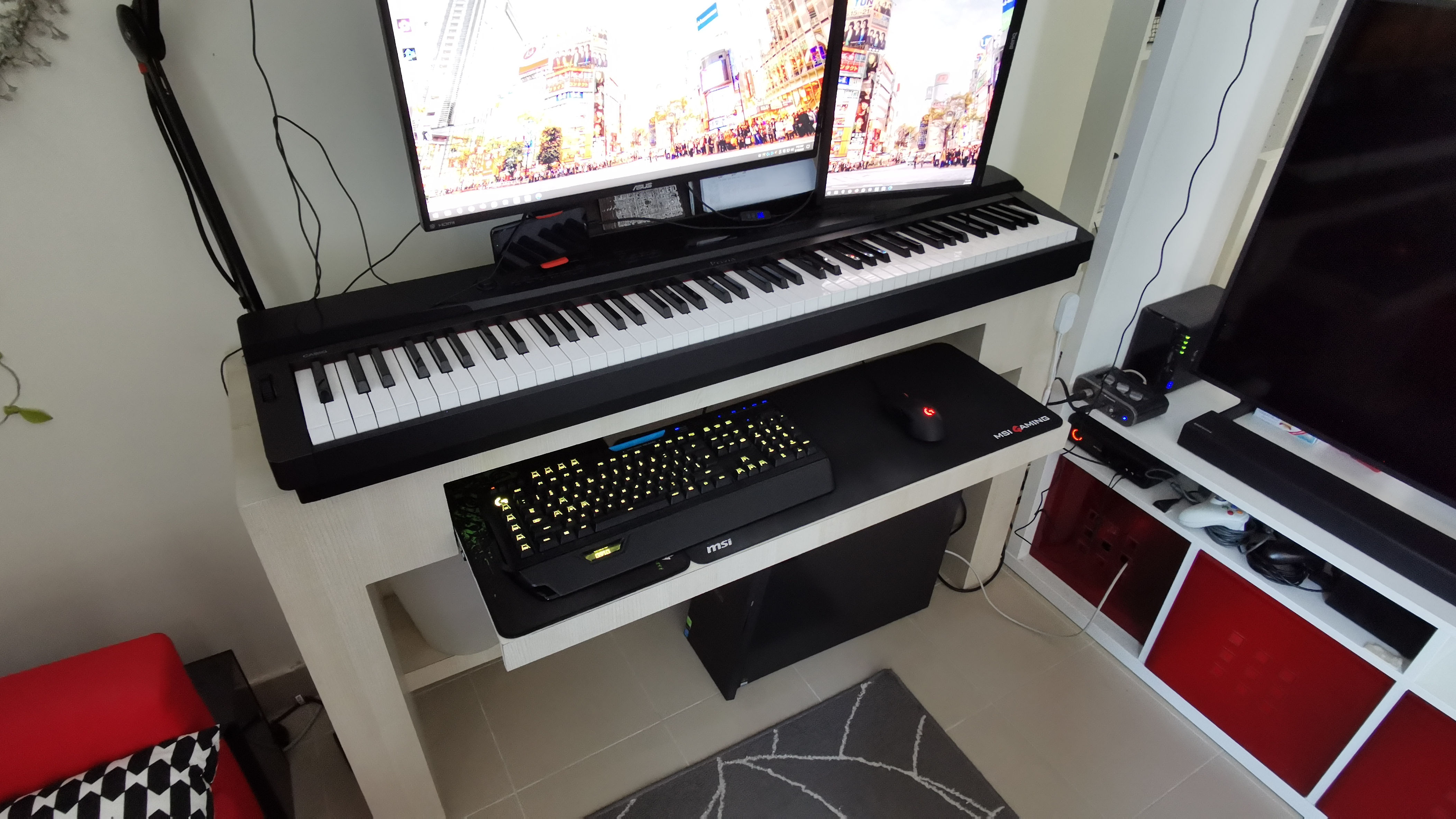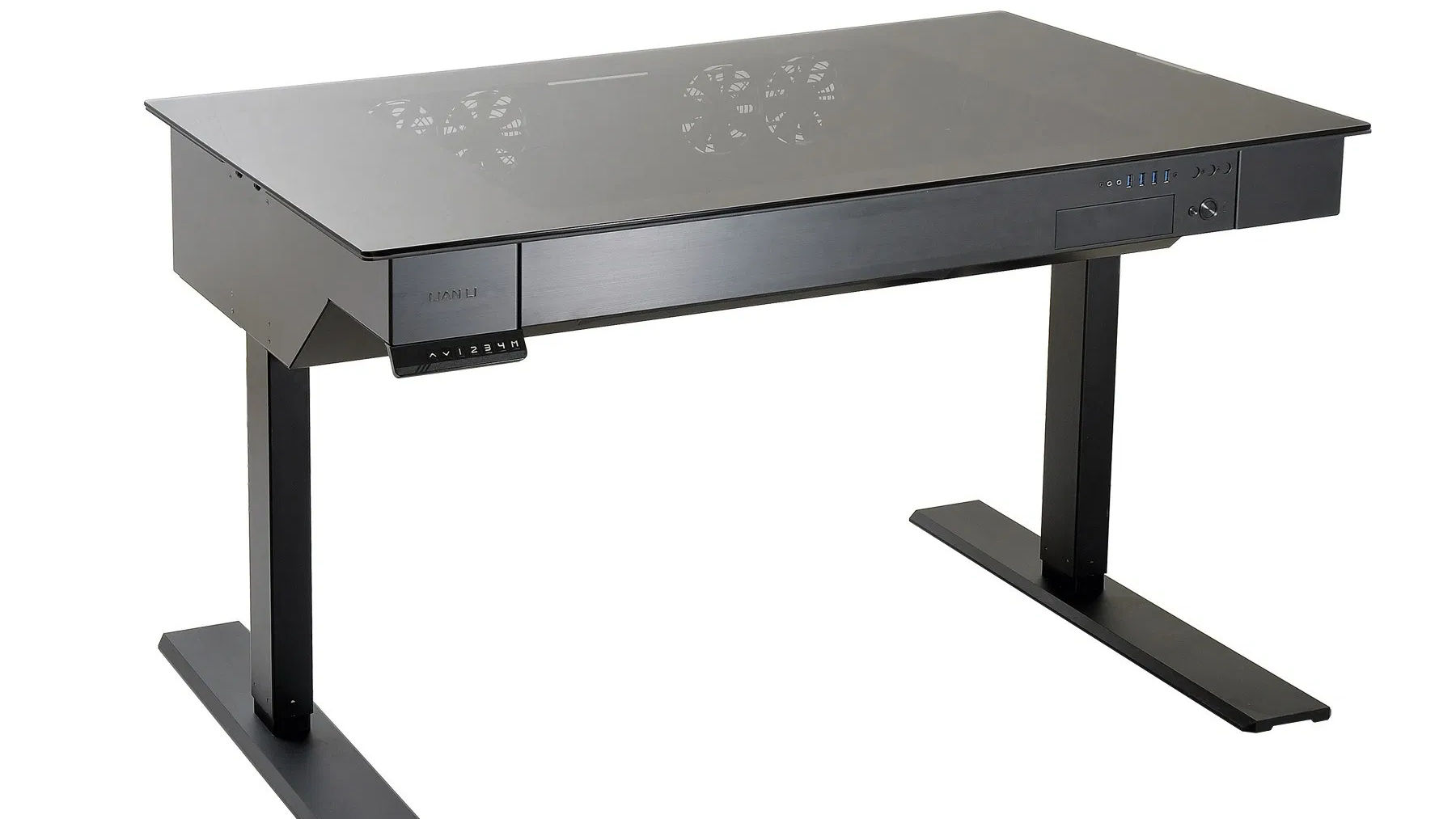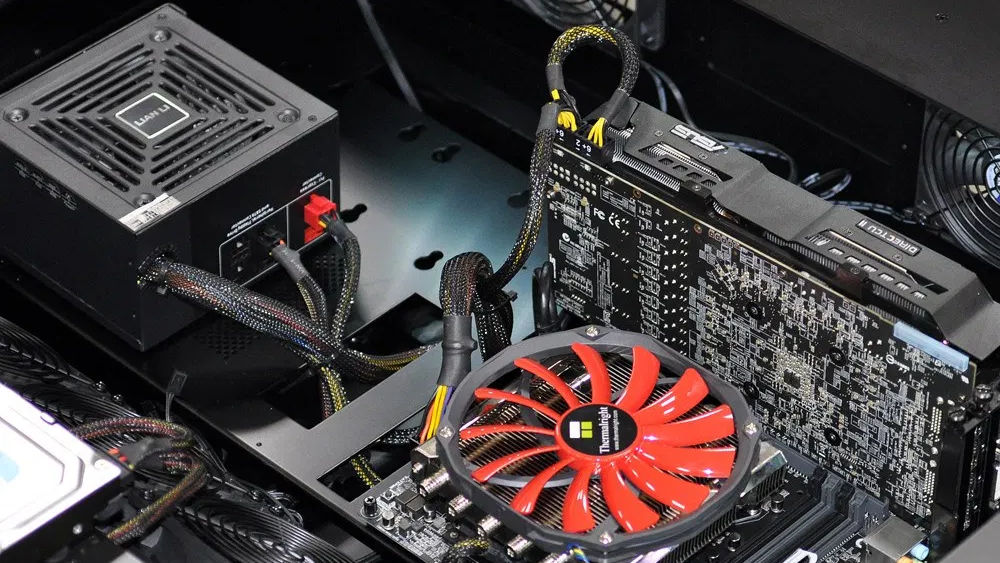Since working from home these past few months, I’ve spent a lot of time at my computer desk. Normally, I’d only be seated at my desk when streaming on Twitch or doing a bit of design work – all of my actual gaming is usually enjoyed from the comfort of my couch.
Make no mistake – my desk is a bit of a behemoth, supporting not only my mouse and keyboard at a comfortable typing level, but also a digital piano and two monitors on a dual-monitor arm. It’s a decent setup for streaming and for getting my work done, rather than tapping away on my MacBook while curled up on the couch (and eventually falling asleep). It’s also a desk that I had custom built a little over two years ago, just because I couldn’t find anything in the market that worked for me.
But all of that may suddenly change, for I have stumbled upon the whimsical and mildly terrifying world of desks – that are actually PC cases.

It’s not an entirely new concept, to be fair – DIY enthusiasts have been turning literally anything into PC cases, including building desks that can house all of their PC components discreetly. I’ve only been recently introduced to ‘desk cases’ (as I’ll call them) from a company called Lian Li, who innocently had emailed me regarding one of their newer PC cases, the Lancool 215. However my eyes took a bit of a wander, and I came across the Lian Li DK-04 instead – a massive desk that doubles as your PC case.
Why would you want one?

Well for starters, it might just be the coolest thing in your apartment. Or your game room. Or your office, if you can sneak one in. Think about it – you’re bragging to your friends about how cool your PC case is, and they’re frantically trying to spot where your PC is hiding when suddenly – BAM! You turn on your desk, complete with all the ‘ooohs’ and ‘aaaaahs’.
It’s also an ingenious setup if you spring for one of the dual-system models, which are able to house two separate computers in one desk. So in theory you could have one PC setup for light tasks or office work, and the other PC can be used for gaming or video editing.

There’s also support for all kinds of novel cooling methods, especially if you’re into using water-cooling. There’s enough space to move things around as you see fit, and with the right set of RGB lighting, you can really turn this into a work of art. Certain models also come with the ability to turn the top of the desk transparent or opaque, depending on when you’d like to show off your geeky internals.
Lastly, if you’re a fan of standing desks, most of these models can be adjusted electronically, so you can go from a sitting to standing position with just a tap of a button.
What do you need to buy?
Well firstly, you need to decide on whether you want to have one or two PCs hidden inside. The two-rig setups are certainly much larger and will need a lot more space to accommodate comfortably. You’ll need at least 100cm x 75cm of space to fit the one-PC desk, with sizing going up considerably if you get the larger models.
Next comes the fun part – selecting your components. Now with a desk this cool you’ll definitely not want to scrimp on parts, so make sure you’re picking something that’s going to last you for a while. This desk case is best suited for water-cooling setups, so if you’ve never used one before, then now is the best time to do so. You’ll not only keep your components at a low temperature, it’ll make for some great visuals when everything’s connected and lit up with RGB lighting.
Speaking of which, while you may get some RGB lighting strips bundled with your desk, feel free to splurge on some RGB components to really bring your build to life. Everything from RAM, power cables, cooling blocks, and more all come with some level of RGB lighting, so you can really play around with a lighting system that you like.
The most important thing you’ll need to keep in mind is that this build is no easy task. You’re going to need at least one or two other people to physically assemble the desk properly to begin with, and then spend a good number of hours (or even days) patiently fitting all the components and making sure everything works properly. The end result is you’ll be rewarded with a truly unique setup that probably none of your friends will ever have.
Should you buy it?
The answer of course, is obvious. If you’ve reached this far then you’re already thinking what furniture you can rearrange to accommodate one of these desks.
The truth is that this is going to be an expensive thing to build – the cost of the desk plus components is going to really sting, so only take up this project if you’ve got some cash to spare.
For those who do take the plunge, the Lian Li series of desk PCs is a very geeky thing to invest in, and is certain to draw plenty of attention wherever you set one up.
Do you need to get one? Perhaps not.
Do you WANT to get one? Absolutely.
from TechRadar - All the latest technology news https://ift.tt/36JSMKy


No comments:
Post a Comment